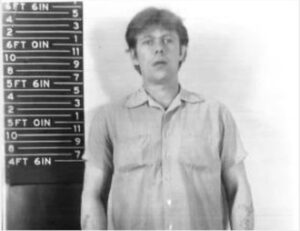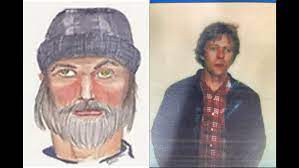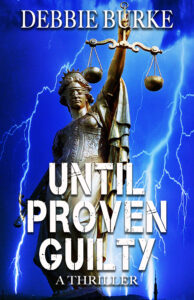
Harry Edward Greenwell
By Debbie Burke
Between 1987 and 1990, three women were sexually assaulted and murdered and one more was raped and left for dead in what were dubbed the “Days Inn/I-65 Murders” in Indiana and Kentucky.
The victims were all hotel clerks working the night shift. Vicki Lucille Heath, 41, was sexually assaulted and murdered on February 21, 1987 and her body found behind a trash bin. Two more victims, Margaret Mary “Peggy” Gill, 24, and Jeanne Gilbert, 34, were both sexually assaulted and killed four hours apart on March 3, 1989 at two different Days Inns in Indiana.
On January 2, 1990, a 21-year-old victim was sexually assaulted and stabbed but survived. She gave information to investigators that led to a composite drawing of the attacker.

Composite of I-65 Killer
Ballistic evidence and DNA connected the cases and indicated the same person committed all four attacks.
But who was he?
For more than 30 years, the cases went unsolved despite physical evidence…until the advent of the relatively new field of Investigative Genealogy.
According to the FBI:
Investigative Genealogy and combines the use of DNA analysis with traditional genealogy research and historical records to generate investigative leads for unsolved violent crimes.
This technique involves uploading a crime scene DNA profile to one or more genetic genealogy databases in an attempt to identify a criminal offender’s genetic relatives and locate the offender within their family tree. Utilizing this process, a match was made to [Harry Edward] Greenwell with a close family member. Through this match, it was determined that the probability of Greenwell being the person responsible for the attacks was more than 99 percent.
Harry Edward Greenwell, born in 1944, had a long, violent criminal history beginning in 1963 and spent time in and out of various prisons for armed robbery, sodomy, and burglary. Following his release in 1983, he went to work for a railroad and worked on tracks throughout the Midwest.
Greenwell was married, had a family, and was well-liked in his Iowa community, selling organic produce at the local farmers market.
He died of cancer at age 68 in 2013 without ever being connected to the murders…until investigative genealogy identified him as the killer with 99.99% probability, based on links between DNA evidence and information about a close relative on genealogy sites.
In 2022, the FBI and the Indiana State Police announced Greenwell was the I-65 Killer, solving the crimes. Additionally, he is being investigated for similar cold case crimes.
After 30+ years, families of the four victims at last have closure, although not justice.
~~~
TKZers: Have you heard of using Investigative Genealogy to solve cold cases? Do you know of any?
~~~

Discover vital links between genealogy and DNA in three baffling cases in Debbie Burke’s latest thriller, Until Proven Guilty.
Available at major booksellers at this link.

Great subject, Debbie, and fodder for some interesting discussion today, particularly confidentiality of data on the genealogy sites.
“until investigative genealogy identified him as the killer with 99.99% probability, based on links between DNA evidence and information about a close relative on genealogy sites.”
This discussion also points to a great book (which we should all read) in which the topic is used for some great plot twists and turns – Until Proven Guilty, by our Debbie Burke.
Thanks, Steve, for your kind words about Until Proven Guilty!
Confidentiality–or lack thereof–is a major issue with genealogy sites. In 2013, an essay in Scientific American warned the data collected may be used against us:
“The Personal Genome Service [of 23andMe] isn’t primarily intended to be a medical device. It is a mechanism meant to be a front end for a massive information-gathering operation against an unwitting public.”
Like Google?
Here’s a link to Wikipedia’s history of the company and its connection to Google: https://en.wikipedia.org/wiki/23andMe
Like much of technology, this is a double-edged sword.
Thanks, Debbie. He looks like such a charming lad. If Mr. Greenjeans was working on railroads throughout the Midwest I have a sneaking suspicion that cold case units in a number of jurisdictions are taking a look at him with fresh eyes. He didn’t wake up on a cold, crisp February morning in Indiana and think, “Wow. I wonder what it would be like to step up my game and slaughter an innocent.” It sounds as if he had some practice and really, really liked it.
The woods are full of these guys. Thanks for giving us the story on one of them. Hope you are having a great week!
Thanks, Joe.
Interestingly, his first wife died in a fire. Hmm.
By genealogy databases the FBI means companies like 123me and ansestry.com. Anyone can purchase access to their databases.
True, Alan. Supposedly the data available to the public doesn’t include personally identifiable information. Law enforcement must subpoena that.
Good forensic stuff, Debbie. But the most fascinating part for me is how this disclosure must have affected his family and close-knit community. A la BTK killer. Loads of plot potential, for both genre and literary fiction.
Thanks, Jim.
The 99% match was probably a child of Greentower and the mother, each providing 50% of the child’s DNA.
The news that “Your dad’s a serial killer” must have been a horrible shock. Definitely plot potential.
Fascinating story, Debbie, and so useful for mystery writers. The families will not get justice, but at least they know the killer is dead. How many like him are currently roaming the US?
Thanks, Elaine. How often do we hear friends and neighbors describe a serial killer as nice and ordinary?
I was trying to answer so questions about my new WIP and read about, Joseph James DeAngelo Jr., The Golden State Killer. I came across an article on Wikipedia about him about a month ago. Amazing how the preservation of evidence can find these people decades later.
Ben, the Golden State Killer case in 2018 was the first time DNA was used by law enforcement to identify the criminal. Fascinating process of deduction.
Fascinating stuff, Debbie.
I’m glad the FBI could find the killer, but it does concern me that DNA data is available so readily. So the authorities closed the case based on DNA evidence of Greenwell’s close relative? Did they exhume his body?
Thanks, Kay.
The FBI report didn’t disclose the process. The body could have been exhumed or Greenwell’s DNA may have been on file (like fingerprints) or otherwise available.
An interesting story about my home state where Greenwell came to roost.
It would be fun to poke around the NCIC and see what he really was up to. I reckon this is the tip of the iceberg.
I recollect a case where the judge sent me a file saying “Dismiss this case. This man is deceased.” He had been found in a cistern behind an abandoned farmhouse where he had been for six years.
Ultimately the killer was caught tried and convicted and is in residence at the Iowa State Penitentiary where he will be until he assumes room temperature. The decedent was not guilty of anything because he had not been tried and convicted. Like Jeffrey Epstein.
All of which makes me wonder about the reason behind such a big publicity splash. What was the purpose of that? Clear the books on some old cases? Get other people off the hook? Give the families of the deceased that much overworked word “closure”? Make the FBI look good?
Cui bono? as the lawyers say.
A compilation of public sources about Greenwell.
https://americancrimejournal.com/harry-edward-greenwell-timeline-of-crimes/
Thanks for the American Crime Journal link, Robert. Truly sickening how many times this obviously violent repeat offender kept escaping–both figuratively and literally.
Cui bono, indeed! Is that the sound of hands patting each other on their backs?
From the cynical devil on my shoulder: How convenient, in a political year, to blame a dead guy and close a cold case.
John, I think your devil isn’t a devil but a voice speaking reality.
That same little devil shoed up on my shoulder, John. (I call him “skeptical.”) He visits me a lot these days.
Wow…good stuff, Debbie. It’s amazing the tools law enforcement have at their disposal these days, compared to just a decade or two ago.
It’s sad that the families won’t get that “justice” meted out by our court systems, but there is another Justice in play here, I’m sure.
Thanks, Deb. Yes, justice on earth doesn’t have a good track record.
Fascinating, Debbie. There’s a true crime show called Genealogy Detective (I think that’s the right title) that focuses on, well, a genealogy detective who kind of fell into this new career by accident. She started by searching for her biological parents, then helped a few friends who were also adopted, and then it morphed into more while chatting with a cop friend about a cold case. She found the killer using her genealogy skills. Now, departments from across the country bring her in to assist in catching killers.
Sue, that’s Cece Moore. I ran across her doing research for Until Proven Guilty. She’s a fascinating speaker and pioneer in the use of autosomal DNA.
TV ads make it sound as if your test results instantly connect you to scads of relatives. In fact, if properly done, the research is extremely complex and requires both genealogy and genetic testing. It depends on the process of elimination to winnow down possible matches to your actual family.
Great piece on a great subject, Debbie. If I’m not mistaken, this is what identified California’s Night Stalker. Sue would know for sure.
Thanks, Garry.
Richard Ramirez (Night Stalker) had already been convicted and sentenced to death when DNA from a 1994 murder in San Francisco was identified as his.
Bizarro-world: According to CBS News, he got married while in prison to a “fan” who later dumped him:
“In 1996, Richard Ramirez married longtime fan Doreen Lioy at San Quentin Prison in California. Lioy left Ramirez in 2009, when his DNA was matched to samples collected at the 1994 San Francisco murder scene.”
So, before that, did she think he was innocent????
Sorry, not the Night Stalker. I’m thinking of the Golden Gate Killer who was recently identified through DNA.
Hard to keep those CA serial killers straight.
Ding, ding, ding. Golden Gate is correct! 😉
Great blog, Debbie! Investigative Genealogy is fascinating. I’ve used it in a couple of books and loved the research.
Thanks, Patricia. It’s a fascinating, bottomless rabbit hole for research b/c new developments keep occurring. See you in the warrens!